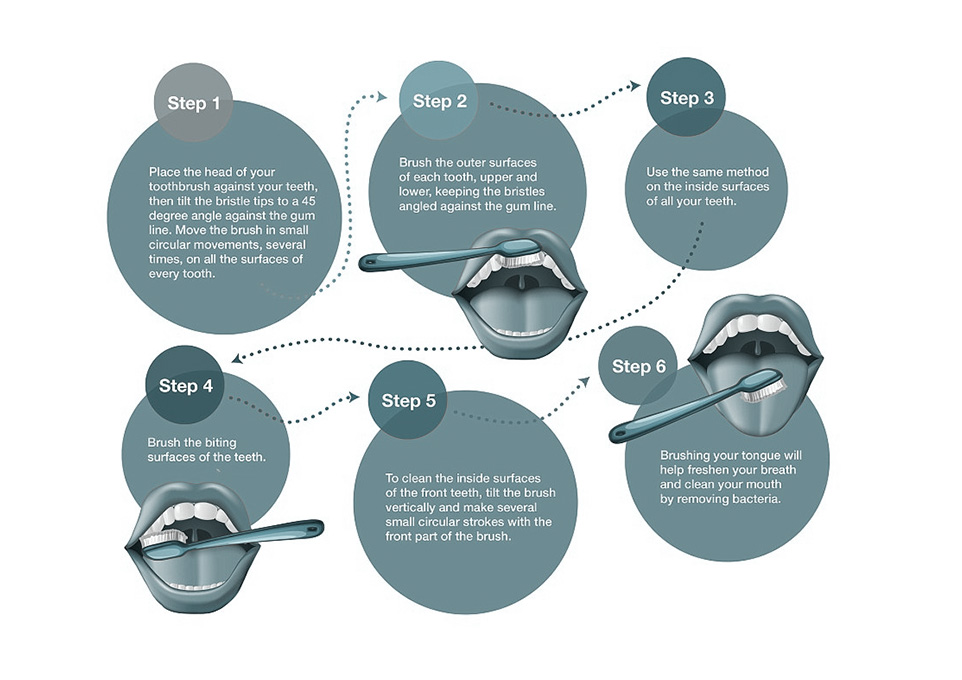Our Services
Dental Exams & Cleanings
Why Are Dental Exams Important?

Regular dental exams are an important part of maintaining healthy teeth and a beautiful smile. When it’s time for their family’s dental exams, Chicago, Lincolnwood, and Sauganash residents come to Smile First Family Dentistry to make sure their teeth are as strong and healthy as possible.
During a dental exam, the dentist can thoroughly evaluate your teeth and gums in order to:
- Detect early signs of disease and complications
- Assess the effectiveness of bridgework and other procedures
- Prescribe treatments and solutions if a problem is detected
During your initial visit to our office in Chicago, IL, the dentist will perform a comprehensive exam on your teeth and gums. During your regular check-ups, the dentist and hygienist will perform the following dental exams:
Oral Cancer Screening: Cancers of the mouth can have a major impact on how you eat, speak and breathe, so the dentist checks the lips, tongue, throat and skin of the face and neck for signs of cancer.
Evaluation of Gum disease: Gum disease can develop and progress, even if there are no signs or symptoms. To prevent further damage, the dentist will check the bone and gums for disease.
Evaluation of Diagnostic X-rays: Not all damage to the teeth occurs on the surface. During dental exams, the dentist will order radiographs, or x-rays, to detect decay, bone loss, and disease. X-rays also determine root and tooth position and can indicate if other procedures are needed to align them.
Evaluation of Tooth Decay: Decaying teeth left untreated can lead to pain, infection and eventual tooth loss. Out dentist will examine each tooth and its surfaces with specialized instruments to identify tooth decay and determine the proper course of treatment.
Evaluation of current restorations: Even restored teeth aren’t safe from disease and decay. The dentist will check fillings, crowns and other dental work for signs of breakdown and recurrent decay.
Dental exams play a crucial role in maintaining oral health. Don’t settle for just any Chicago dentist, trust your smile to the experts at Smile First Family Dental Studio!
Dental Cleanings

Regular dental cleaning is one of the most important steps you can take to keep your teeth healthy and beautiful. While good habits at home are important — including regular brushing and flossing, plus an anti-cavity rinse At Smile First Family Dental Studio, regular dental cleanings with exams are the foundation of our healthy philosophy. Not only are we removing all the potentially harmful bacteria from your mouth, but we will ensure that every pathologic problem is resolved. The more often you come in for routine checkups, the less problems you have.
Why teeth cleaning is so important
Even the best dental hygiene routine doesn’t guarantee your mouth and teeth are completely free of germs and tartar. Home toothbrushes, floss and dental rinse can only do so much. In fact, being too aggressive in your home regimen can do more harm than good. When it comes to a safe, pain-free dental cleaning, Chicago, Lincolnwood, Skokie, Evanston and Sauganash residents come to Smile First Family Dental Studio to keep teeth clean and healthy.
- During a typical dental cleaning, the teeth are scaled to remove any plaque on the tooth and under the gum line that regular brushing and flossing can’t reach. The process can be done using sonic and ultrasonic scales, replacing the hand scales that made teeth cleaning painful in the past.
- A dental polishing is done along the gum line to prevent future plaque buildup. After the cleaning, the patient rinses out with water or a dental rinse.
Following your visit with the dentist, you’ll receive home care instructions on how to protect your teeth and gums from gum disease and infection. Your dentist will tell you that good oral hygiene, regular dental checkups and healthy eating habits can prevent gingivitis and periodontitis, making every regular dental cleaning less painful and less invasive.
Professional Cleaning
A Registered Dental Hygienist performs professional dental cleanings. Each cleaning appointment includes:
- Oral hygiene Instruction: Instruction includes review of brushing and flossing techniques along with tips on how to reach the commonly missed areas.
- Removal of Plaque: Plaque adheres to the teeth and over time and becomes calculus (tartar). It is difficult to see, and the bacteria that reside in the plaque produce toxins that cause inflammation in the gums and other tissue. This inflammation is the beginning of periodontal disease.
- Removal of Calculus (tartar):As plaque gets old it hardens into calculus. It can form on the tooth above and below the gum line. Calculus cannot be removed by brushing or flossing. It requires special dental instruments to be removed.
- Tooth Polishing: Plaque and stains are removed by polishing in areas where brushing and flossing are not effective.
Don’t forget we offer teeth whitening services in Chicago, Lincolnwood, Skokie, Evanston and Sauganash areas to supplement regular cleanings. Keep that million dollar smile bright with Smile First Family Dental Studio.
How to Properly Brush and Floss
Home care is equally important to visiting the dentist twice a year. Brushing and flossing are the most important daily habits to good oral hygiene. Proper brushing and flossing not only protect the teeth and gums from disease but also reduce the bacteria that may lead to other diseases in the body.
The Benefits of Brushing
The purpose of brushing is to remove food particles from your teeth. When food decomposes in your mouth, it nourishes dangerous bacteria. These bacteria cause several unpleasant problems that lead to painful tooth decay and other serious conditions.
Proper brushing and flossing are essential for prevention of:
- Staining – Certain foods, and especially beverages such as tea, can stain your teeth
- Bad Breath (halitosis) – Bad breath is not only unpleasant for others, but it can also indicate serious health problems
- Decay – Bacteria break down the protective enamel on teeth, which leads to decay. Tooth decay leads to cavities, and cavities lead to infection when left untreated
- Periodontal disease – — Keeping gums healthy through regular brushing and flossing prevents periodontal disease, which can be painful and also uncomfortable to treat
The Right Way to Brush
You should plan to brush at least twice a day or after each meal. The proper toothbrush should be small with soft, rounded bristles and should ideally be changed every 3-4 months. There are also various types of electrical toothbrushes that have received The American Dental Association (ADA) seal of approval.
If you choose an electric toothbrush, focus on the area where the gums meet the teeth. Also, don’t forget to brush your tongue — a large percentage of bacteria live there.
Steps for Proper Brushing
- Place the toothbrush at a 45-degree angle against the surface of the tooth where the gums and tooth meet.
- With small circular motions gently brush the teeth and gums.
- Be careful not to apply too much pressure or scrubbing. This can damage the enamel of the teeth and the soft tissue of the gums.
Why Flossing Matters

Although your teeth may feel fresh just after you brush, food particles and bacteria remain in the small spaces between the teeth. Flossing is an additional way to prevent decay and recession by removing plaque from the spaces between the teeth. These areas are difficult to reach with traditional toothbrushes and flossing should be done everyday. There are many types of floss on the market and selecting the right type of floss is important and should be discussed with the dentist.
Basic Steps for Proper Flossing
When flossing, make sure you clean the spaces between the teeth in the front and rear of your mouth. You may bleed a little at first. As you make flossing a regular habit, however, the bleeding should stop. If you continue to bleed following regular brushing and flossing, make an appointment with the dentist.
To begin flossing, you must:
- Dispense a piece of floss approximately 18 inches long and wrap one end around the middle fingers of both hands. Continue wrapping until you can place your index finger on the floss and they are 4-5 inches apart.
- Work the floss between the contacts of the teeth down toward the gums.
- Once the floss is past the contact gently curve the floss around each individual tooth and gently move the floss up and down to remove debris.
Pre-threaded Floss
Many people have switched from traditional floss to the new pre-threaded floss holders. These convenient ways to floss make it much easier to quickly and effectively floss between each of your teeth. If you find it difficult to wrap floss around your fingers and reach your back teeth this may be a great alternative. Should the floss become dirty, simply rinse the floss and continue — or dispose of it and use a new flosser. You can use the pick-end to carefully dislodge stubborn food particles.
When you schedule an appointment at Smile First Family Dental Studio, the dentist and hygienist will be able to help you with proper brushing and flossing techniques. Remember, preventive care is an important part of maintaining excellent dental health. Schedule an appointment with Smile First Family Dental Studio today. Following each visit with the emergency dentist at our office in on Lincoln ave. Chicago IL, 60659.

